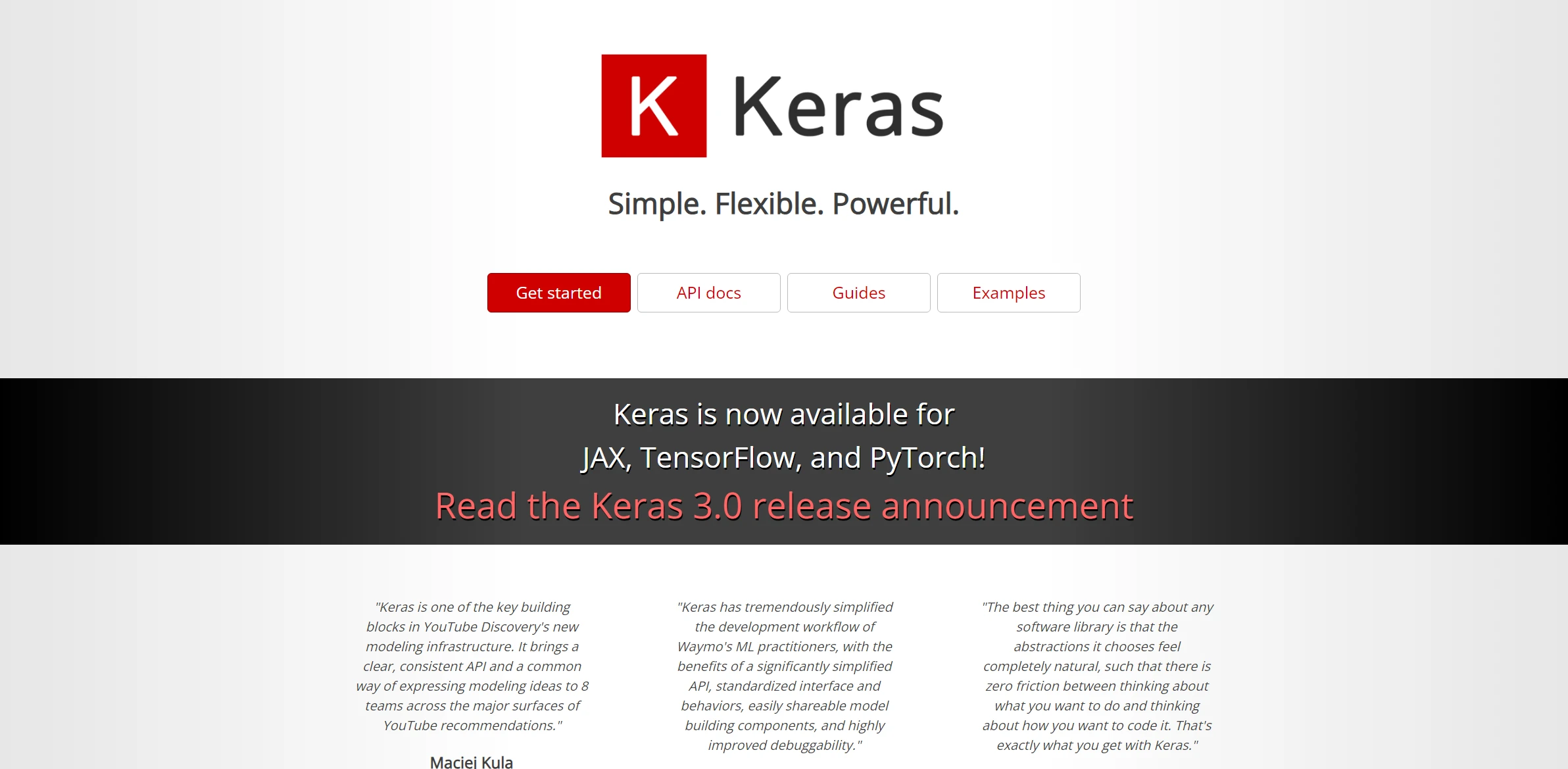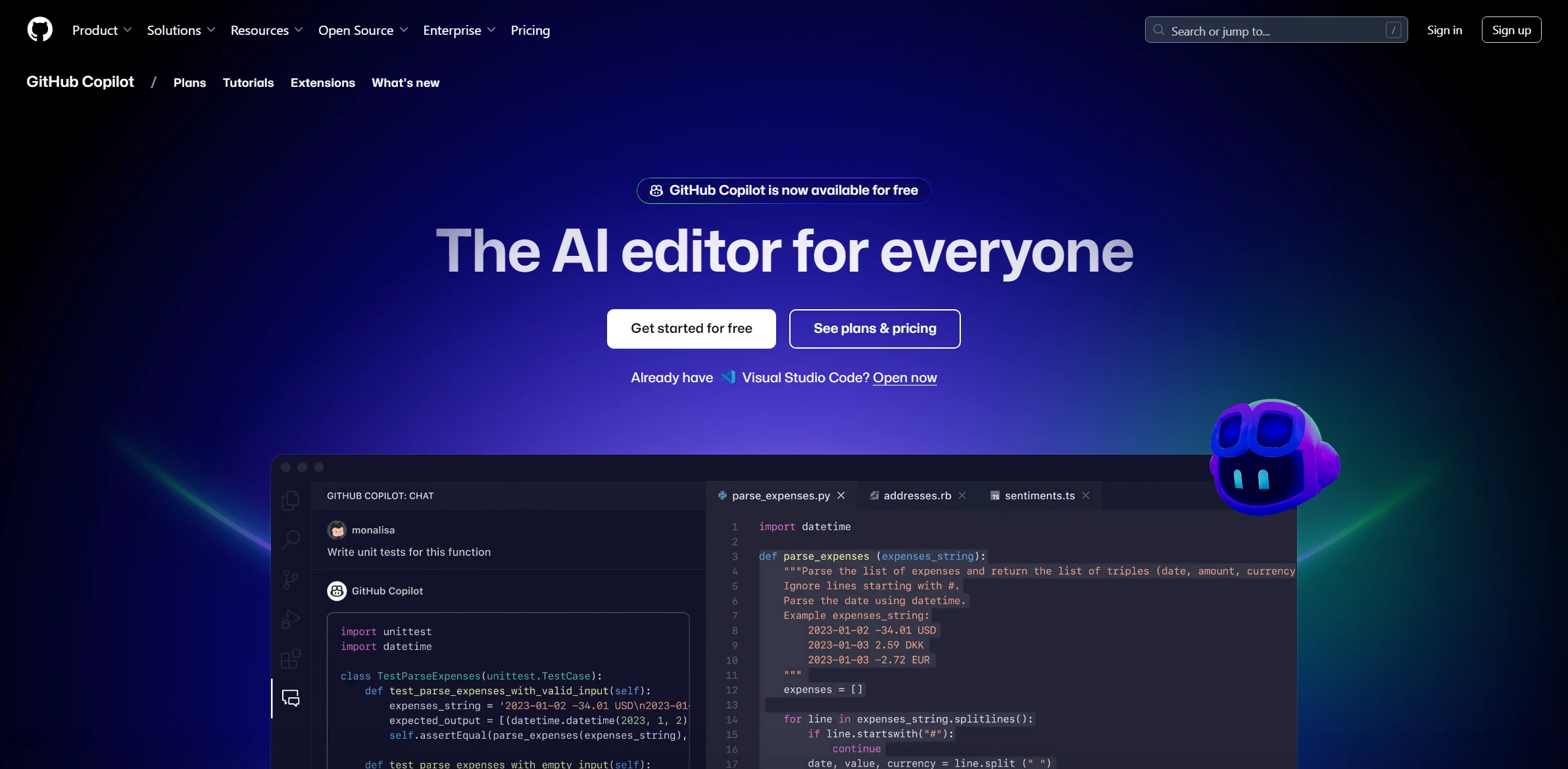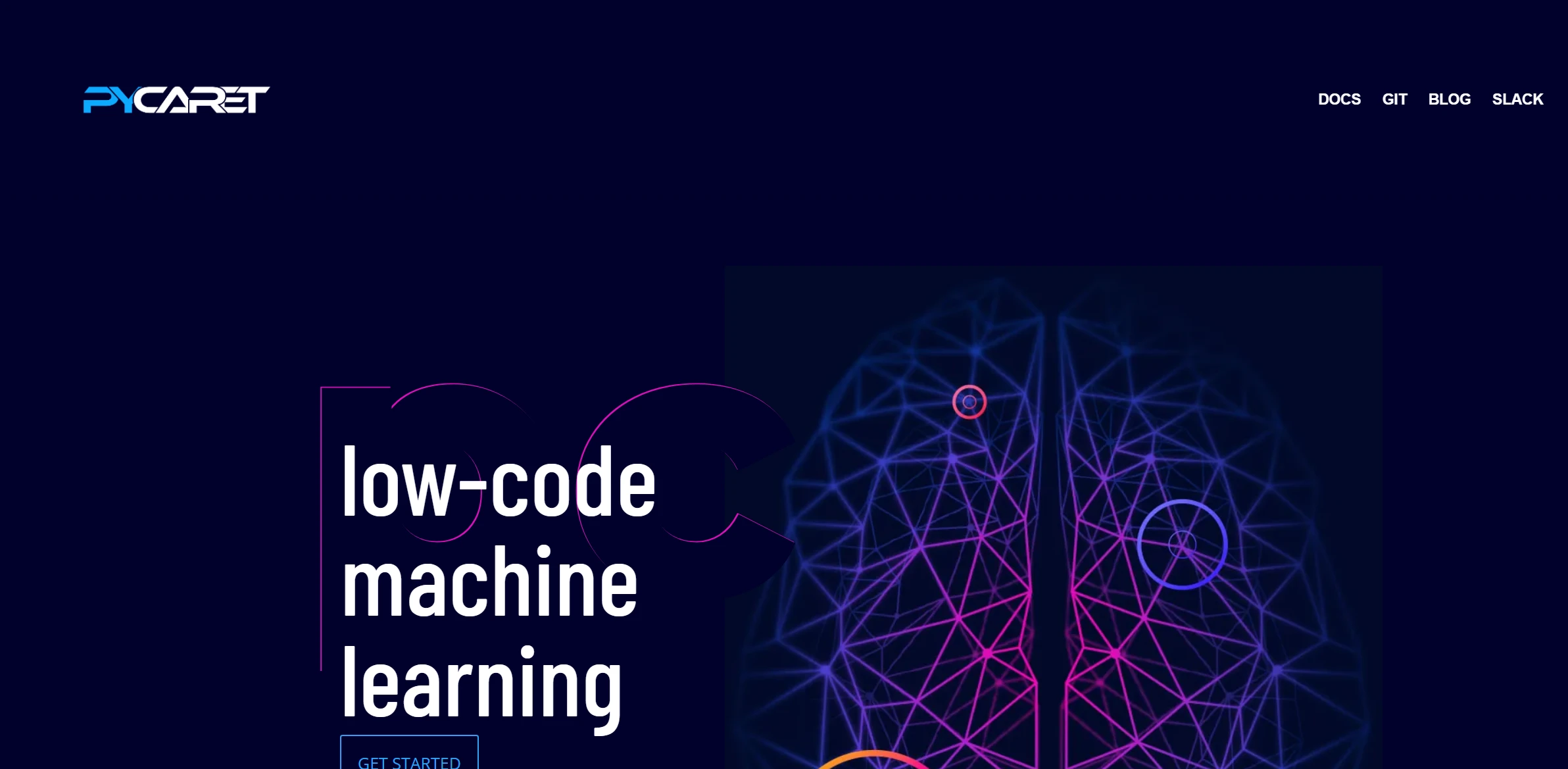Artificial Intelligence Tool Keras

DESCRIPTION
Keras is an open-source deep learning framework written in Python that serves as an interface for the TensorFlow library. It is designed to simplify the process of building neural networks, making it accessible for both beginners and experienced practitioners. Keras provides a high-level API that allows users to create and train deep learning models with minimal code, focusing on user-friendliness and modularity. Its ability to run on top of various backends, including TensorFlow, Theano, and CNTK, enhances its flexibility in deployment across different platforms and hardware configurations.
One of the key functionalities of Keras is its intuitive model-building capabilities through the Sequential and Functional APIs. The Sequential API allows users to build models layer by layer in a straightforward manner, making it easy to visualize and understand the architecture of the neural network. On the other hand, the Functional API offers more advanced features, enabling the creation of complex models with shared layers and multiple inputs or outputs. This flexibility is particularly beneficial in applications such as image recognition, natural language processing, and time series forecasting, where intricate relationships between data points need to be captured.
The practical impact of Keras is evident in its ability to accelerate the development of machine learning solutions across various industries. By facilitating rapid prototyping and experimentation, empowers data scientists and developers to iterate on their models quickly, reducing time-to-market for AI-driven applications. Its extensive library of pre-trained models and built-in support for common tasks, such as image classification and text generation, allows users to leverage existing knowledge and fine-tune models for specific use cases. This democratization of deep learning technology has made it possible for organizations of all sizes to harness the power of AI, driving innovation and efficiency in fields ranging from healthcare to finance.
Why choose Keras for your project?
Keras simplifies the development of deep learning models with its user-friendly, high-level API, making it accessible for beginners and experienced developers alike. Its modularity allows for easy experimentation with different neural network architectures. Keras integrates seamlessly with TensorFlow, providing robust performance and scalability. Practical use cases include image classification using convolutional neural networks (CNNs), natural language processing with recurrent neural networks (RNNs), and real-time data analysis through easy-to-implement layers. Additionally, Keras supports multiple backends, enabling flexibility in deployment across various platforms. This combination of simplicity and power makes Keras a preferred choice for rapid prototyping and production-ready applications.
How to start using Keras?
- Install and its dependencies by using pip: `pip install keras`.
- Import the modules needed for your project, such as models, layers, and optimizers.
- Prepare your dataset by loading it and preprocessing it into the required format.
- Define your model architecture by adding layers to a sequential model or using the functional API.
- Compile the model with an optimizer, loss function, and evaluation metrics, then train it on your dataset using the `fit` method.
PROS & CONS
 Simplifies the process of building neural networks with a user-friendly API, making it accessible for beginners and experts alike.
Simplifies the process of building neural networks with a user-friendly API, making it accessible for beginners and experts alike. Supports multiple backends such as TensorFlow, Theano, and CNTK, providing flexibility in model training and deployment.
Supports multiple backends such as TensorFlow, Theano, and CNTK, providing flexibility in model training and deployment. Offers extensive documentation and community support, facilitating easier troubleshooting and faster learning curves.
Offers extensive documentation and community support, facilitating easier troubleshooting and faster learning curves. Enables rapid prototyping through its modular nature, allowing quick experimentation with different layers and models.
Enables rapid prototyping through its modular nature, allowing quick experimentation with different layers and models. Integrates seamlessly with other libraries and tools in the Python ecosystem, enhancing its capabilities for data analysis and visualization.
Integrates seamlessly with other libraries and tools in the Python ecosystem, enhancing its capabilities for data analysis and visualization. Limited flexibility in customizing neural network architectures compared to lower-level frameworks.
Limited flexibility in customizing neural network architectures compared to lower-level frameworks. May have performance overhead due to abstraction layers, potentially leading to slower execution times.
May have performance overhead due to abstraction layers, potentially leading to slower execution times. Smaller community support compared to some more established libraries, which can affect the availability of resources and troubleshooting.
Smaller community support compared to some more established libraries, which can affect the availability of resources and troubleshooting. Less control over the training process and optimization compared to more granular frameworks.
Less control over the training process and optimization compared to more granular frameworks. Potential compatibility issues with some advanced features available in other machine learning libraries.
Potential compatibility issues with some advanced features available in other machine learning libraries.
USAGE RECOMMENDATIONS
- Familiarize yourself with the basics of Keras and its architecture before diving into advanced topics.
- Start with simple projects to build your understanding of neural networks and Keras functionality.
- Utilize the built-in datasets available in Keras for practice and experimentation.
- Leverage Keras’ functional API for more complex model architectures as you grow more comfortable.
- Regularly consult the documentation for updates, best practices, and detailed API references.
- Experiment with different optimizers, loss functions, and metrics to find the best combination for your specific problem.
- Make use of callbacks such as ModelCheckpoint and EarlyStopping to enhance model training efficiency.
- Explore data augmentation techniques to improve model generalization and prevent overfitting.
- Utilize pre-trained models from Keras’ applications module for transfer learning when applicable.
- Engage with the Keras community through forums and GitHub to exchange knowledge and troubleshoot challenges.
SIMILAR TOOLS

GitHub Copilot
Develop code faster with automated and adaptive suggestions for various programming languages.
Visit GitHub Copilot
TensorFlow
TensorFlow revolutionizes the way we approach tasks related to solving complex problems efficiently. An essential ally for success in the digital era.
Visit TensorFlow
PyCaret
Facilitate data science projects with a collaborative platform that optimizes enterprise data management.
Visit PyCaret